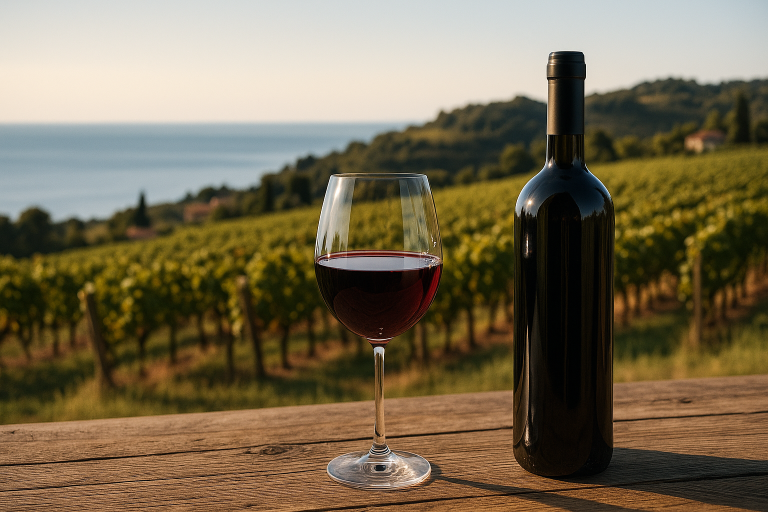Few grapes tell a more fascinating story than Zinfandel and Primitivo — two names for the same variety that found fame on opposite sides of the world. Known for its jammy fruit, spicy warmth, and generous body, Zinfandel is a quintessentially American red. Yet its roots reach back centuries to southern Italy, where the same grape has long thrived as Primitivo. Together, they represent a bridge between the Old and New Worlds — bold, soulful, and unmistakably expressive.
A Brief History
For years, Zinfandel was thought to be a native California grape — an all-American original that arrived during the Gold Rush era of the 1850s. It wasn’t until modern DNA analysis in the 1990s that scientists discovered its true identity: Zinfandel and Italy’s Primitivo are genetically identical, both descending from a rare Croatian grape called Crljenak Kaštelanski.
While Primitivo was cultivated in Italy’s Puglia region as early as the 18th century, Zinfandel became a pillar of California winemaking, shaping the state’s reputation for big, fruit-forward reds. Early immigrants brought the vines west, planting them throughout the foothills and valleys. By the late 19th century, Zinfandel was California’s most widely planted grape, loved for its adaptability and intense flavor.
Today, it remains one of California’s most iconic varietals — often referred to as “America’s heritage grape” — while Primitivo continues to thrive in Italy’s sun-drenched south, particularly in Salento and Manduria.
Where It’s Grown
California is Zinfandel’s adopted home, with key regions including Napa Valley, Sonoma County, Paso Robles, and the Sierra Foothills. Old vines, some over a century old, produce concentrated wines with incredible depth and balance.
In Italy, Primitivo flourishes in Puglia, where it’s made in a robust, rustic style with black fruit, spice, and earthy undertones. The Primitivo di Manduria DOC is especially known for rich, full-bodied wines with intense flavor and high alcohol.
Beyond these powerhouses, Croatia and even Australia have begun reviving the grape’s original lineage, crafting modern interpretations that honor its global legacy.
Tasting Notes
Zinfandel / Primitivo is typically full-bodied, with medium to high alcohol, soft tannins, and lush fruit flavors. Expect notes of blackberry, raspberry jam, plum, and cherry, layered with black pepper, cinnamon, and clove. California versions often show ripe fruit and a touch of sweetness, while Italian Primitivos lean more savory — with earthy spice, dried fig, and hints of tobacco or licorice.
The texture is smooth and mouth-filling, with a warm finish that lingers. Depending on the style, Zinfandel can range from vibrant and spicy to rich and jammy, offering something for every palate.
Pair it with barbecue, grilled meats, pasta with tomato sauce, pizza, or aged cheeses — dishes that can stand up to its bold personality and ripe fruit.
The Essence of Zinfandel / Primitivo
At its core, Zinfandel (or Primitivo) is a wine of energy and heart. It thrives in sunshine, exudes warmth, and delivers instant pleasure in the glass. While their expressions differ — California’s exuberant and fruit-driven, Italy’s earthy and soulful — they share the same DNA and the same joy of expression.
In every bottle, you’ll find a story of migration, rediscovery, and resilience — a reminder that great wines, like people, often carry their history with them. Zinfandel is more than a wine; it’s a living connection between continents — bold, generous, and endlessly captivating.







